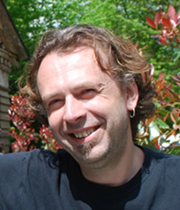Hut, prof. dr. Roelof

Roelof Hut is professor Chronobiology aan de Faculty of Science and Engineering. In zijn onderzoek houdt hij zich met name bezig met chronobiologie. Dit is een onderdeel in de biologie dat zich richt op het bestuderen van het bioritme van het lichaam, zoals het innemen van voedingsstoffen, lichamelijke en geestelijke activiteit, slaapkwaliteit- en duur en gewichtsregulatie. Hut richt zich voornamelijk op de evolutionaire, ecologische en neurobiologische aspecten van deze bioritmen. In eerste instantie richtte hij zich voornamelijk op het bestuderen van zoogdieren, maar de laatste jaren heeft hij zijn werk uitgebreid met projecten bij vogels, insecten en mensen. Door zijn brede interesse in alle aspecten van chronobiologie vormt zijn werk een solide basis voor de breedte en diversiteit van het vakgebied.
Hut houdt zich onder andere bezig met de invloed van de zomer- en wintertijd op ons slaapritme. Ons dag- en nachtritme wordt bepaald door onze biologische klok, die weer beïnvloed wordt door de zonnetijd. De zon is onze belangrijkste lichtbron en bepaalt voor een groot deel wanneer we willen gaan slapen. Volgens Hut zorgt de zomertijd ervoor dat we twee uur van onze biologische klok zitten, waardoor we regelmatig de wekker zetten. Hij geeft aan dat het zetten van een wekker per definitie zorgt voor slaaptekort en pleit daarom samen met een aantal andere onderzoekers voor de afschaffing van de zomertijd.
Video
Eerder in het nieuws
- Videocollege Roelof Hut: moeite met opstaan? Zo word je een ochtendmens
- Zo ga je het beste om met de start van de wintertijd
- Fris wakker worden? Waarom je de wekker voortaan beter uit kunt laten
- Elk orgaan zijn eigen klok
Contact en meer informatie
Publicaties
2024
2023
2022
2021
2020
2019
2018
2017
2015
2014
2013
2012
2011
2010
2009
2008
2007
2006
2004
2003
2002
| Laatst gewijzigd: | 09 juni 2023 20:36 |
